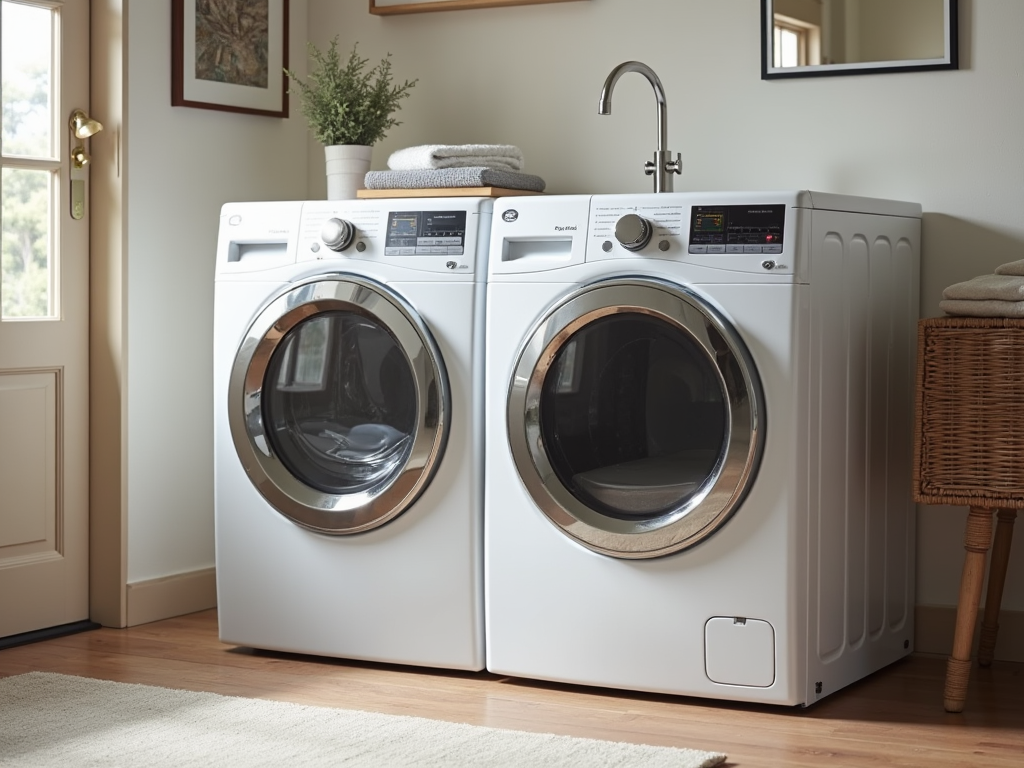Quick facts
Can't find the answer you're looking for? Please get in touch with our friendly team.
Are gas dryers being phased out?
Gas dryers are not being phased out entirely, but there is a growing trend toward electric dryers due to energy efficiency and environmental concerns. Many manufacturers are focusing on developing more energy-efficient electric models, which may influence consumer preferences in the future.
Category Overview
Introduction
Gas dryers play a vital role in modern households, ensuring that your laundry routine is efficient and enjoyable. Unlike traditional electric models, gas dryers provide faster drying times while being energy-efficient, making them a significant asset for any home. They enhance your everyday life by removing the hassle of damp clothing and promoting comfort after washing—nothing beats the coziness of fresh, dry laundry awaiting you at the end of a busy day.
Functionality
The primary function of gas dryers is to efficiently dry clothes using heated air. This process not only accelerates drying time but also helps reduce wrinkles and static cling. Gas dryers can be conveniently placed in various settings, from dedicated laundry rooms to multi-purpose spaces, allowing for flexibility depending on your home layout. Many models come with unique features such as moisture sensors that detect when clothes are dry to prevent over-drying. Some units even offer steam cycles that refresh garments without the need for a full wash. This versatility makes gas dryers an essential appliance whether you’re tackling everyday loads or special items like delicate fabrics and bed linens.
Design & Style
When it comes to design, gas dryers typically boast sleek exteriors that integrate well into any laundry space. Common materials include high-quality metal finishes with enamel coatings that resist scratches and dents. You will find various styles available—from compact designs suitable for small apartments to larger capacity units ideal for bigger families. Gas dryers can fit seamlessly into diverse decor themes including modern industrial or contemporary chic. Consider pairing a stainless-steel dryer with minimalist cabinetry or opting for retro-inspired colors if you prefer vintage aesthetics. Personalizing your setup can elevate both functionality and style, ensuring it complements existing elements in your home.
Practical Considerations
Selecting the right gas dryer requires some thoughtful consideration. Determine the size appropriate for your available space; compact models may suit smaller rooms better while larger units cater to heavier usage needs. Opting for durable materials is crucial if you plan on regular use. Be cautious about common pitfalls—like assuming all models have similar features when there might be significant differences in energy efficiency ratings or drying capacities between brands. Ensure to read reviews and check product specifications thoroughly to maximize functionality based on your specific needs.
Comparison and Alternatives
When evaluating gas dryers, consider different materials like stainless steel versus plastic casing; stainless steel tends to be more durable while plastic can be lighter and less expensive. Additionally, look at design variations—round vs rectangular shapes generally impact space management differently depending on your room layout. Think about how much capacity you need; larger families might benefit from high-capacity options while those living alone may find smaller models just right without compromising on performance.
Trends and Popular Items
Current trends show a rise in eco-friendly appliances featuring smart technology integration; many consumers appreciate apps connected to their gas dryer that alert them when loads are finished or provide maintenance reminders. Moreover, sleek designs that mimic furniture aesthetics are gaining popularity—imagine having an eye-catching model as part of your home's decor instead of being just another appliance tucked away. Embrace these trends by choosing popular items like high-efficiency models or those featuring advanced drying technologies to keep up with both style and practicality demands in today’s fast-paced world.


